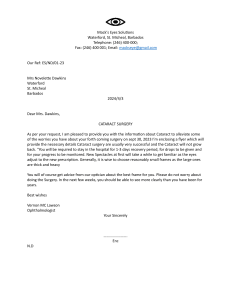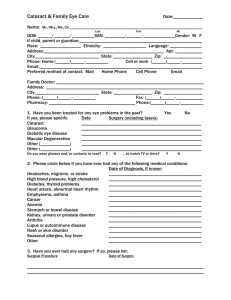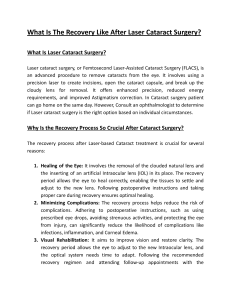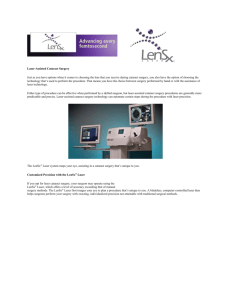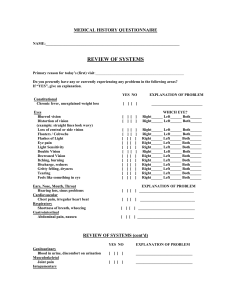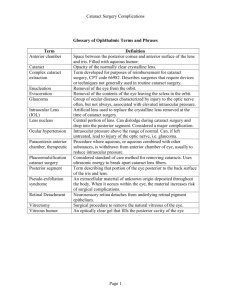Quality Standards for Cataract Services
advertisement
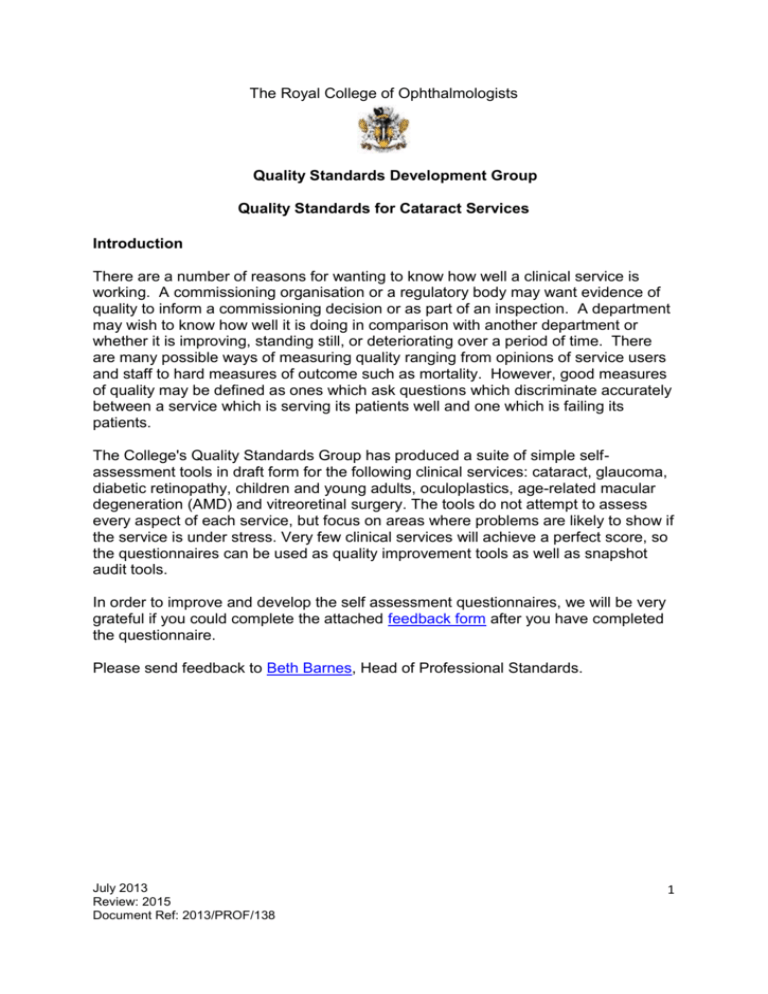
The Royal College of Ophthalmologists Quality Standards Development Group Quality Standards for Cataract Services Introduction There are a number of reasons for wanting to know how well a clinical service is working. A commissioning organisation or a regulatory body may want evidence of quality to inform a commissioning decision or as part of an inspection. A department may wish to know how well it is doing in comparison with another department or whether it is improving, standing still, or deteriorating over a period of time. There are many possible ways of measuring quality ranging from opinions of service users and staff to hard measures of outcome such as mortality. However, good measures of quality may be defined as ones which ask questions which discriminate accurately between a service which is serving its patients well and one which is failing its patients. The College's Quality Standards Group has produced a suite of simple selfassessment tools in draft form for the following clinical services: cataract, glaucoma, diabetic retinopathy, children and young adults, oculoplastics, age-related macular degeneration (AMD) and vitreoretinal surgery. The tools do not attempt to assess every aspect of each service, but focus on areas where problems are likely to show if the service is under stress. Very few clinical services will achieve a perfect score, so the questionnaires can be used as quality improvement tools as well as snapshot audit tools. In order to improve and develop the self assessment questionnaires, we will be very grateful if you could complete the attached feedback form after you have completed the questionnaire. Please send feedback to Beth Barnes, Head of Professional Standards. July 2013 Review: 2015 Document Ref: 2013/PROF/138 1 Balance of Questionnaire: 20% Safety; Patient Experience 30%; Effectiveness 50% 1. The unit maintains a regular audit of preoperative and postoperative visual acuity on patients undergoing cataract surgery. (Domain – effectiveness) YES (score 2) NO (score 0) UNABLE TO ANSWER (score 0) 2. The unit: a. Maintains a regular audit of intended and actual postoperative refractive status on patients undergoing cataract surgery and (Domain – effectiveness 50%) YES (score 1) NO (score 0) UNABLE TO ANSWER (score 0) b. Uses the results to adjust biometric A constants for each method of measurement (Domain – patient experience 50%) YES (score 1) NO (score 0) UNABLE TO ANSWER (score 0) 3. The unit maintains a regular audit of posterior capsule rupture during cataract surgery. (Domain – effectiveness) YES (score 2) NO (score 0) UNABLE TO ANSWER (score 0) 4. The unit has policies for the management of endophthalmitis following cataract surgery including identification and management of a possible cluster of cases of endophthalmitis. (Domain – safety) YES (score 2) NO (score 0) UNABLE TO ANSWER (score 0) 5. The unit undertakes periodic surveys of patient satisfaction with cataract care (Domain – patient experience) YES (score 2) NO (score 0) UNABLE TO ANSWER (score 0) 6. Are you signposting patients to shared decision making tools? YES (score 2) July 2013 Review: 2015 Document Ref: 2013/PROF/138 NO (score 0) UNABLE TO ANSWER (score 0) 2 7. Are you using a cataract specific surgery checklist YES (score 2) NO (score 0) UNABLE TO ANSWER (score 0) Total Score out of 14: References to other College documents: Cataract Surgery Guidelines 2010 Author: Mr Richard Smith, FRCOphth July 2013 Review: 2015 Document Ref: 2013/PROF/138 3
